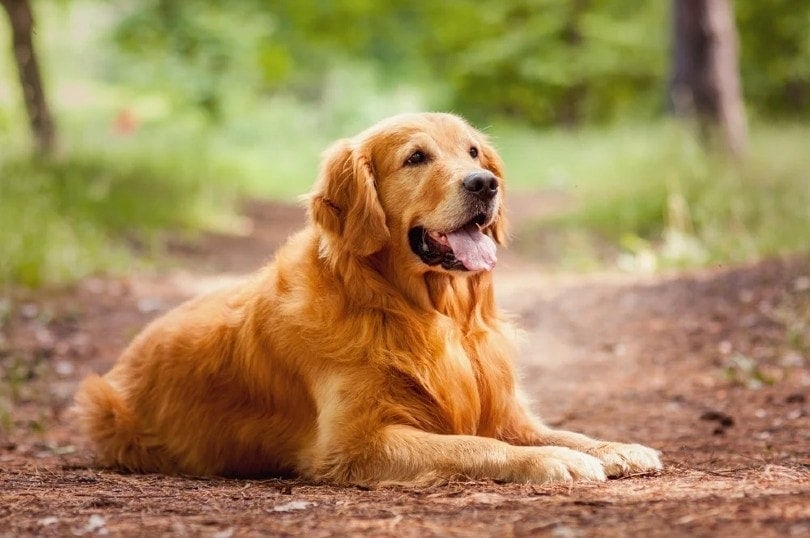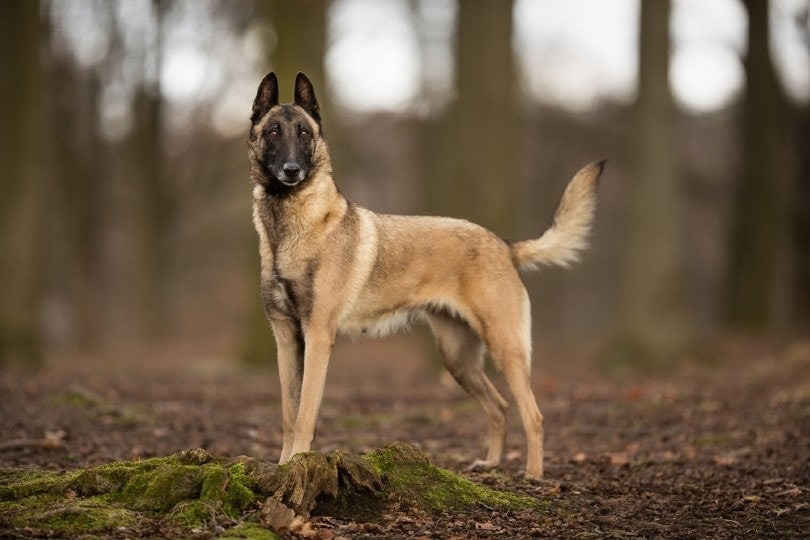Does My Dog Think Humans Are Dogs? The Interesting Facts
By Ed Malaker
Updated on
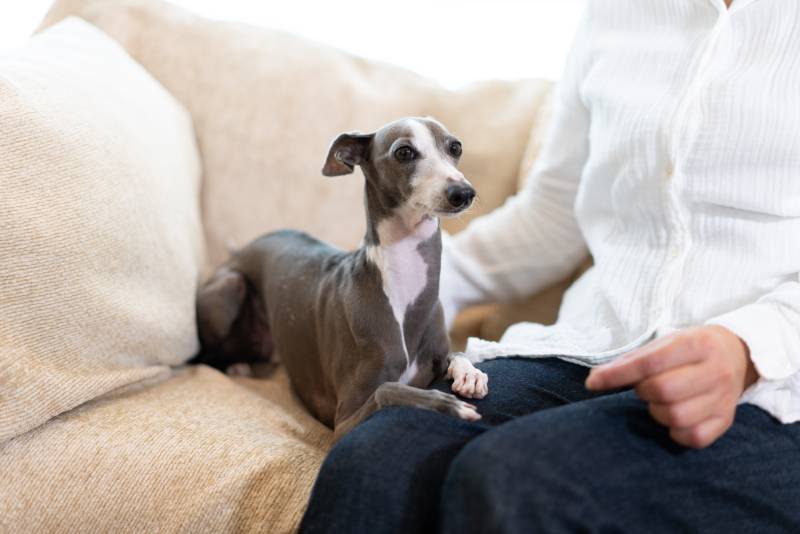
Our dogs spend most of their time with us, watch us closely, and seem to get along better with us than they do other animals, which might make you wonder if they think that humans are dogs like them. The short answer is no. Your pet knows that you aren’t a dog, but keep reading as we explain how they do recognize you and other pets and their relationship with humans.
Why Dogs Don’t Think Humans Are Other Dogs
Sense of Smell
Your dog identifies living things in their environment based primarily on their smell. Your pet’s nose is far more sensitive than a human’s and has many times the number of olfactory sensors. Certain scientists 1 suggest that a dog’s nose is 100,000 times more sensitive than a human’s nose, which enables them to detect a fragrance in the parts per trillion. This ability enables dogs to track people and other animals for great distances, and they can even tell how long it’s been since something left a track. With a nose this good, it’s likely that your pet can tell the difference between a human and another animal and between different humans and animals.
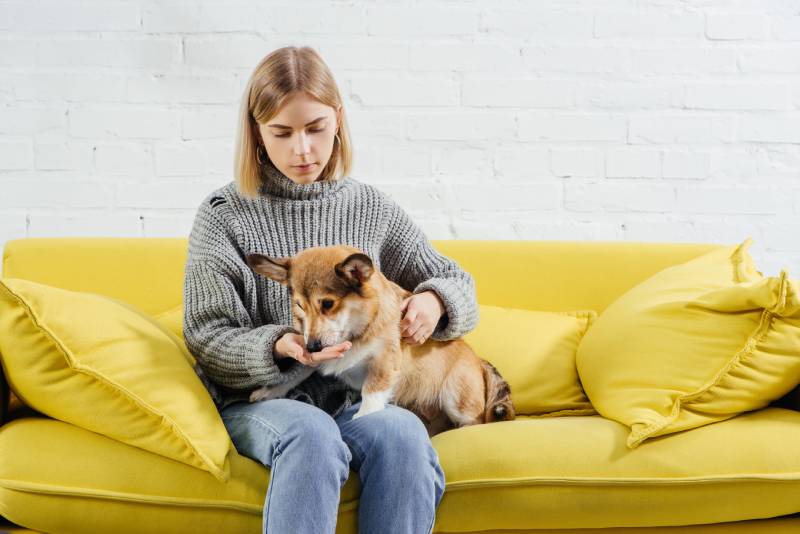
Pheromones
Dogs, like cats, produce pheromones that enable them to communicate. They use their vomeronasal organ (also called Jacobson’s organ), a small group of sensory cells between the mouth and the nose, to pick up the scent of these pheromones, which are moisture-born fragrances that differ from airborne odors. Pheromones help animals communicate many things, including territory, to other animals, and they are important for helping dogs find other dogs for mating. Since humans do not produce pheromones, it’s unlikely that a dog would confuse a human for another dog.
Sight
Finally, dogs can use their sense of sight to identify other dogs. A study by the University of Paris tested the ability of nine dogs to differentiate between dogs, cats, birds, and chickens when looking at images. All nine dogs could separate images of other dogs, even if they were a different species, showing that dogs likely know the difference between dogs and humans.
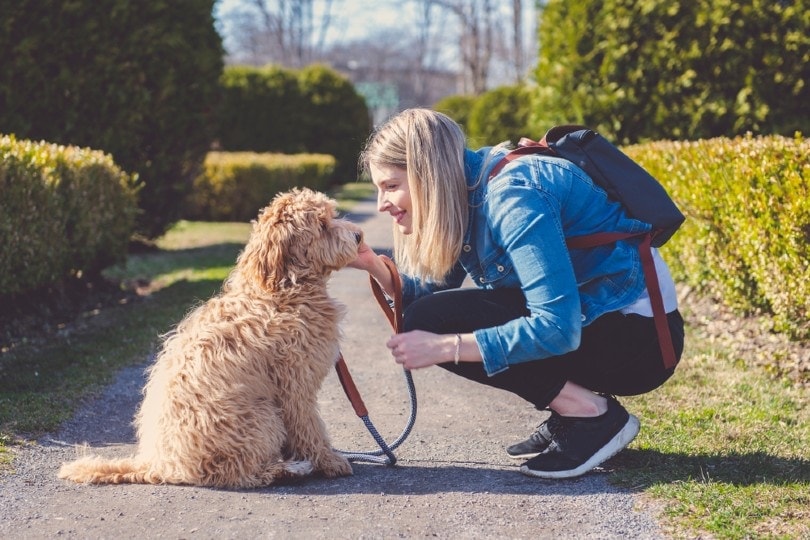
Does My Dog Think That They’re Human?
No, your dog does not consider themselves a human for the same reasons that they don’t think that you’re a dog. However, despite your differences, your pet probably wants to become a valued family member and considers you part of theirs. A study from the University of Vienna shows that dogs exhibit a “secure base effect” with their human owners. This is usually seen between parents and their children and occurs when the child uses the parent as a secure base when exploring the environment or trying new things. Scientists witnessed the same thing happening between dogs and their owners.
In the study, the dogs were likelier to play with toys or eat treats when their owner was present, even if the owner remained silent, showing that a secure base exists between them. This likely means your dog considers you their protector, making you an important part of their family.
Conclusion
Your dog likely knows that you aren’t a dog due to their ability to visually tell the difference between the two of you, their strong sense of smell, and their ability to detect pheromones. Your pet can even identify other dogs using only pictures, and pheromones also help them find a mate and mark their territory. Since humans don’t look like dogs nor produce pheromones, it’s unlikely that your dog will get confused. However, just because you are different doesn’t mean your dog doesn’t consider you part of their family, with studies showing that your pet looks to you as a secure base that they rely on when exploring their environment and learning new things.
See Also:
- What Does My Dog Think About All Day? You Might Be Surprised!
- Do Dogs Think Cats Are Dogs? Canine Understanding Explained
Featured Image Credit: violetblue, Shutterstock



